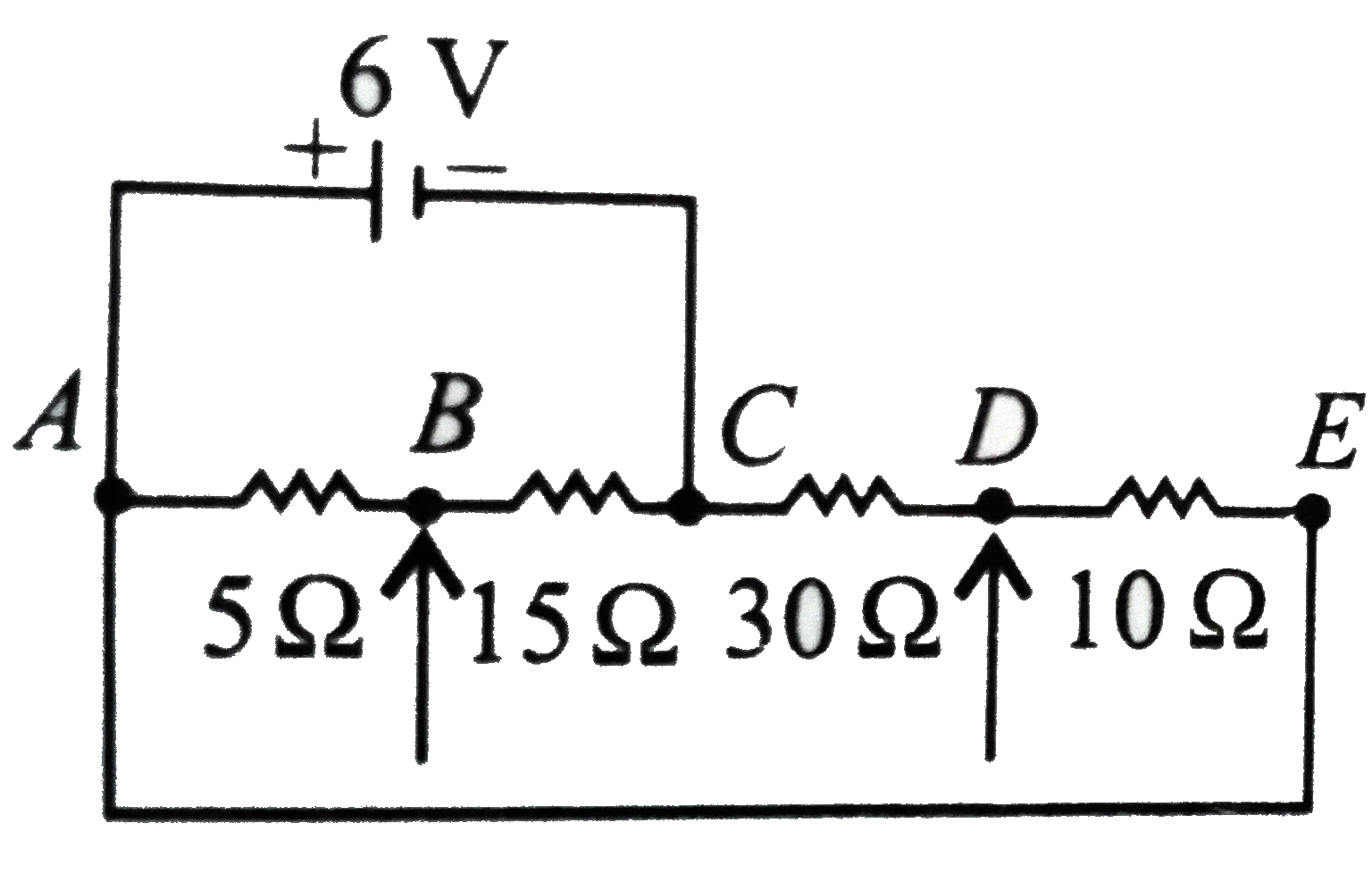The power dissipated across resistance R which is connected across a battery of potential V is P. If resistance is doubled, then the power becomes
1/2
2
1/4
1
The correct Answer is:A
To solve the problem, we need to analyze how the power dissipated across a resistor changes when the resistance is doubled.
1. Understand the Power Formula:
The power P dissipated across a resistor R connected to a voltage V is given by the formula:
P=V2R
2. Initial Power Calculation:
Let's denote the initial resistance as R. The initial power dissipated across this resistance is:
P=V2R
3. Doubling the Resistance:
If the resistance is doubled, the new resistance becomes 2R.
4. New Power Calculation:
The new power P′ dissipated across the new resistance 2R is:
P′=V22R
5. Relate New Power to Initial Power:
To find the relationship between the new power P′ and the initial power P, we can express P′ in terms of P:
P′=V22R=12⋅V2R=P2
6. Conclusion:
Therefore, when the resistance is doubled, the new power P′ becomes half of the initial power P:
P′=P2
Final Answer:
If the resistance is doubled, the power becomes P2.
---
The power P dissipated across a resistor R connected to a voltage V is given by the formula:
P=V2R
Let's denote the initial resistance as R. The initial power dissipated across this resistance is:
P=V2R
If the resistance is doubled, the new resistance becomes 2R.
The new power P′ dissipated across the new resistance 2R is:
P′=V22R
To find the relationship between the new power P′ and the initial power P, we can express P′ in terms of P:
P′=V22R=12⋅V2R=P2
Therefore, when the resistance is doubled, the new power P′ becomes half of the initial power P:
P′=P2
If the resistance is doubled, the power becomes P2.
Topper's Solved these Questions
Similar Questions
A uniform heating wire of resistance 36 ohms is connected across a potential difference of 240 V. The wire is then cut into half and a potential difference of 240 V is applied across each half separately. The ratio of power dissipation in first case to the total power dissipation in the second case would be 1 : x, where x is _________ .
View SolutionA cell having an emf ε and internal resistance r is connected across a variable external resistance R. As the resistance R is increased, the plot of potential difference V across R is given by:
View Solution
Knowledge Check
- Question 1 - Select One
The maximum power dissipated in an external resistance R, when connected to a cell of emf E and internal resistance r, will be
AE2rBE22rCE23rDE24r - Question 2 - Select One
The power dissipated by a light bulb with 4 ohm resistance when connected in parallel to 12V battery is
A36 WB3.6 WC0.36 WD0.036 W - Question 3 - Select One
Cell A has emf 2 E ad internal resistance 4 r. Cell B has emf E and internal resistance r. The negative of A is connected to the positive of B and a load resistance of R is connected across the battery formed. If the terminal potential difference across A is zero, then R is equal to
A3rB2rCrD5r
2A cell having an emf ε and internal resistance r is connected across a variable external resistance R. As the resistance R is increased, the plot of potential difference V across R is given by
View SolutionA cell having an emf E and internal resistance r is connected across a variable external resistance R. As the resistance R is increased, the plot of potential difference V across R is given by
View SolutionTwo equal resistances are connected in seires across a battery and consume a power P If these are connected in parallel, then power consumed will be
View SolutionA voltmeter having resistance of 1800Ω is employed to measure the potential difference across 200Ω resistance which is connected to DC power supply of 50 V and internal resistance 20Ω. What is the percentage change in potential difference across 200Ω resistance as a result of connecting voltmeter across it ?
View SolutionFour resistors are connected as shown in the figure. A 6 V battery of negligible resistance is connected across terminal battery of negligible resistance A and C. The potential difference across terminal B and D will be
 View Solution
View Solution
